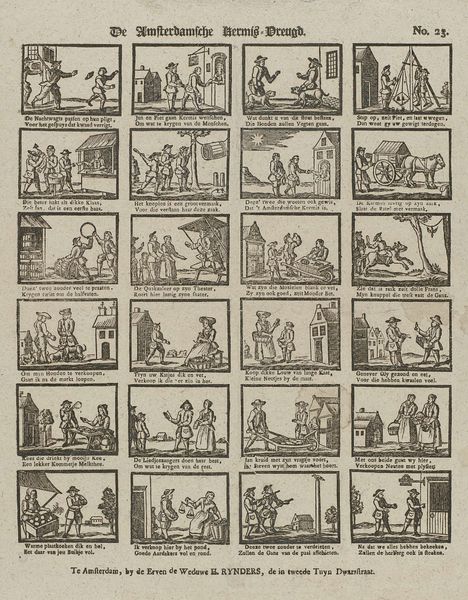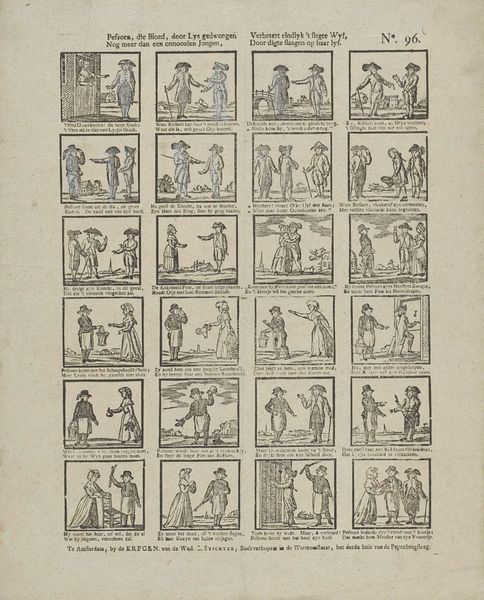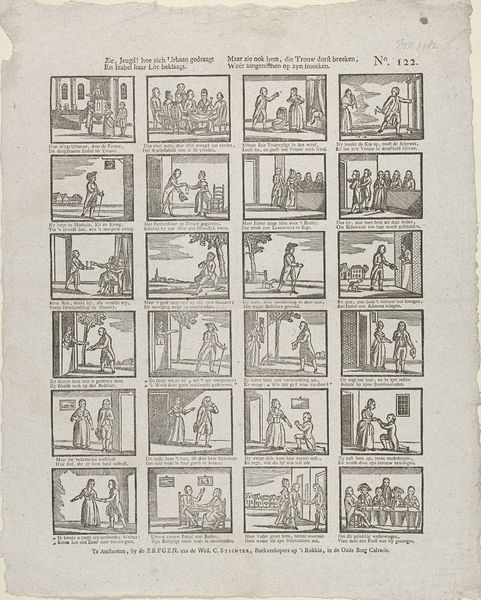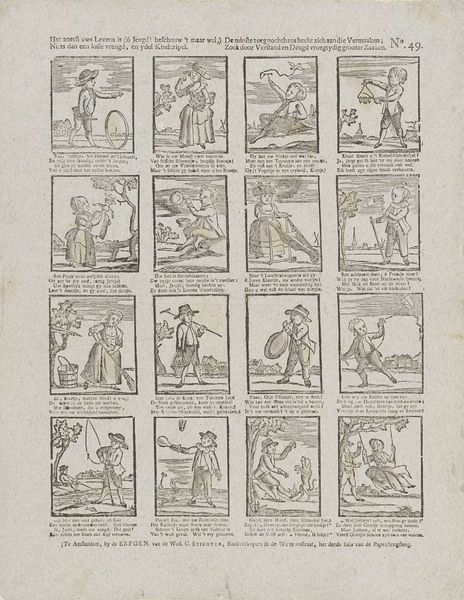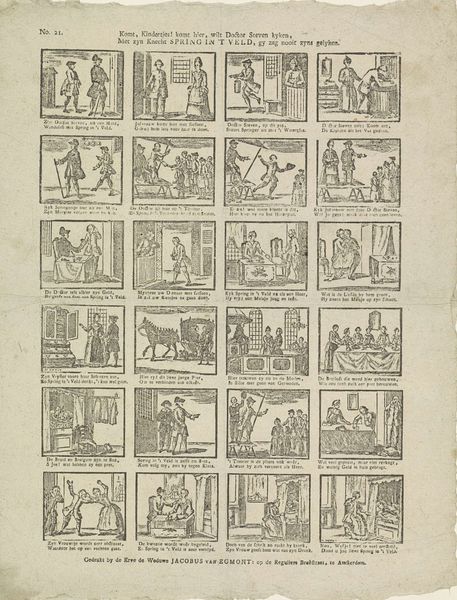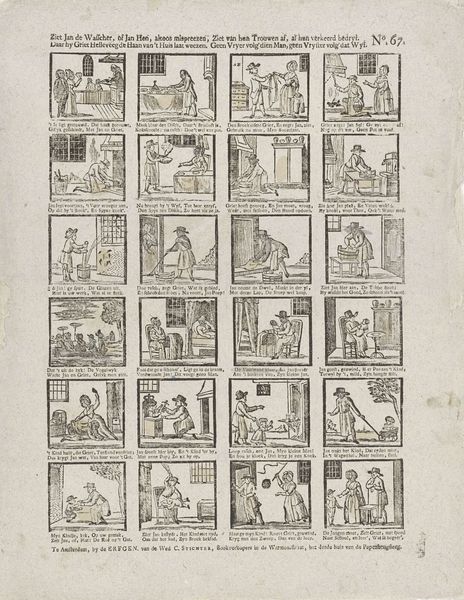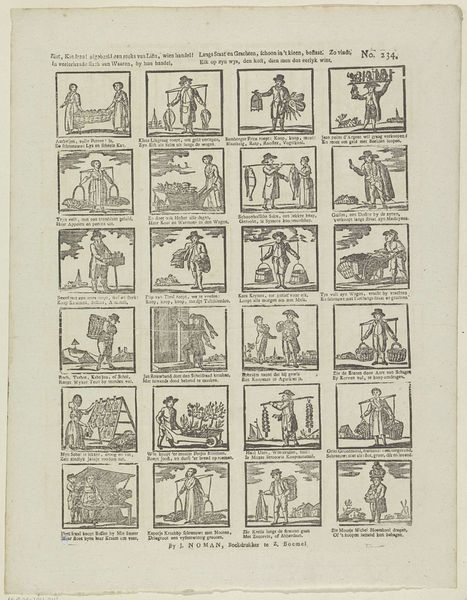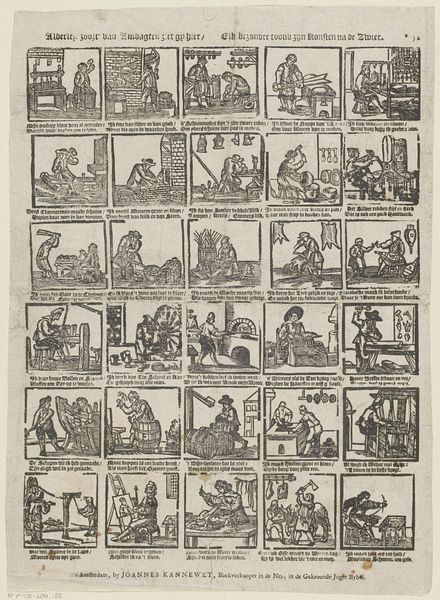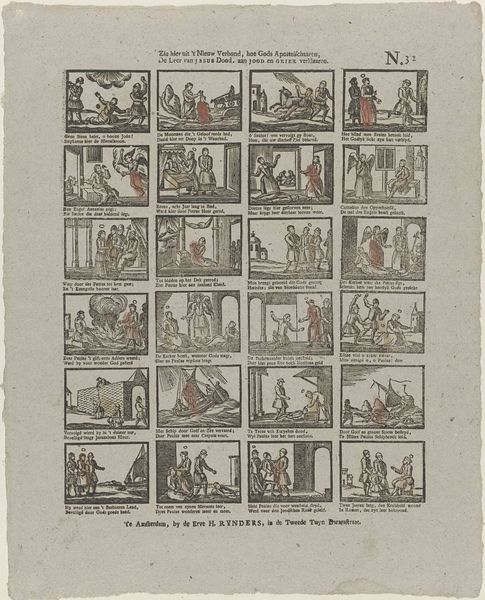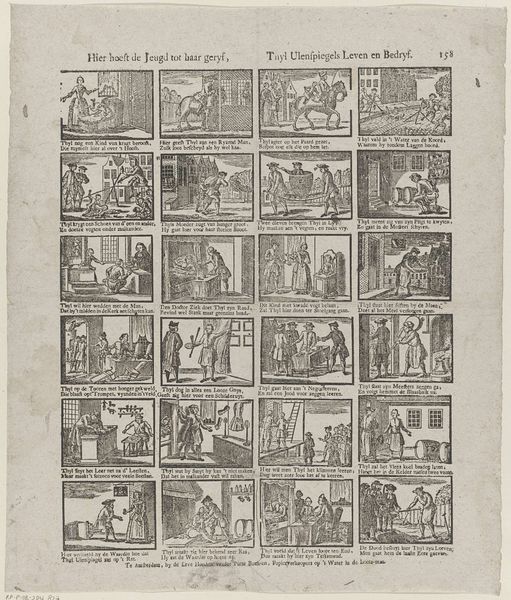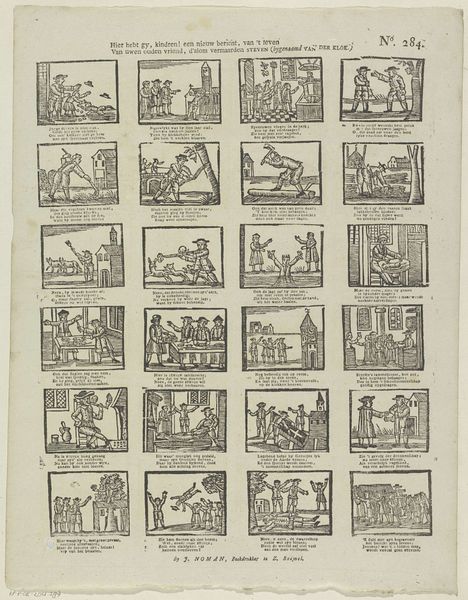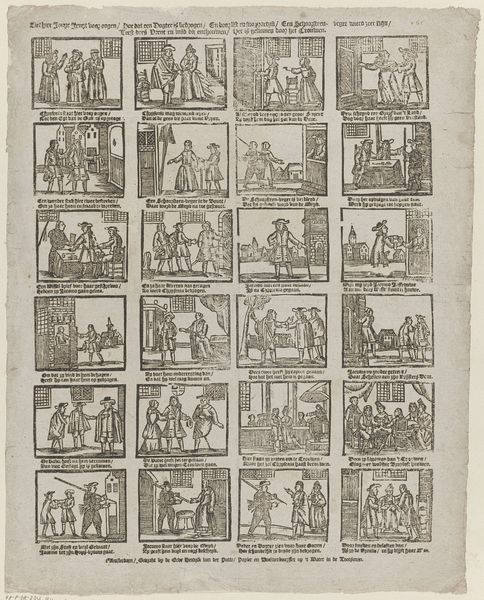
Veelerhande slag van zaaken, / En een reeks van raare snaaken, / Ziet ge ô kindren! weder hier, / In deez' prenten op papier 1715 - 1813
0:00
0:00
print, engraving
#
narrative-art
# print
#
comic
#
genre-painting
#
engraving
Dimensions: height 410 mm, width 315 mm
Copyright: Rijks Museum: Open Domain
Editor: Here we have a print titled "Veelerhande slag van zaaken, / En een reeks van raare snaaken, / Ziet ge ô kindren! weder hier, / In deez' prenten op papier," dating sometime between 1715 and 1813, and currently held at the Rijksmuseum. It appears to be a series of small scenes, almost like a comic strip. The figures feel quite antiquated, but what narrative threads or underlying meanings do you observe? Curator: Indeed. What strikes me is the cultural memory embedded within these seemingly simple scenes. Notice how each image, despite its small scale, echoes archetypal behaviors and societal roles of the period. What symbols are immediately apparent to you? Editor: Well, I see domestic scenes, people working, some sort of games or sport perhaps, and references to rural life. Curator: Precisely. Consider then how these vignettes become symbolic carriers. For instance, a figure with a hunting rifle speaks not just of the hunt, but also dominion, class, perhaps even the very essence of man conquering nature. What’s especially compelling is how these commonplace visuals coalesce to construct a visual lexicon instantly readable by contemporary eyes. Editor: So it's less about the literal actions and more about what those actions represented? Curator: Exactly. The engraving technique, the very act of mass reproduction… all amplify a shared cultural understanding. They tap into a collective consciousness, informing perceptions and shaping behavior through recognizable symbols. Do you sense any repeated visual motif beyond the human figure? Editor: The architecture maybe? Most of the scenes include simple houses. Curator: Excellent. Architecture is seldom accidental. In this instance, the recurring motif points toward ideas of home, belonging, and rootedness – bedrock principles of that society. I believe children were meant to understand these prints by making connections. Editor: That's fascinating. It changes how I see them. Curator: And how does knowing all this reflect on you, as a person studying these objects, not just seeing them? Editor: I never considered the cultural significance within something that looked quite simple on the surface. Thanks for helping me think about that!
Comments
No comments
Be the first to comment and join the conversation on the ultimate creative platform.
